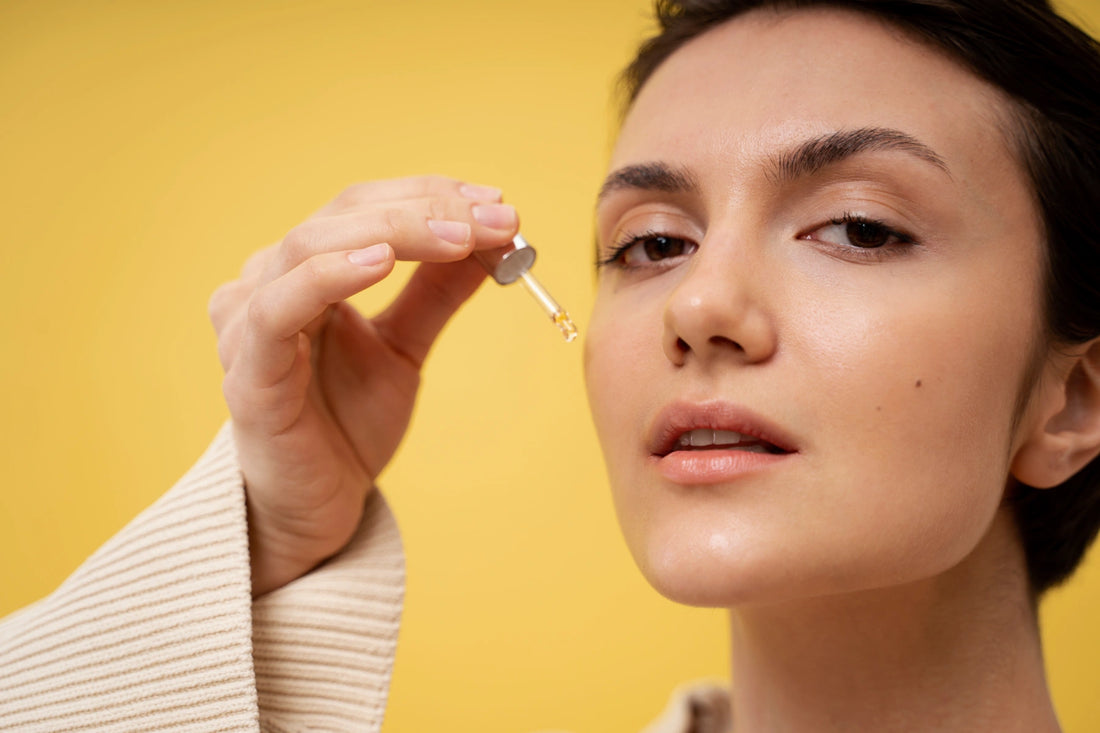Are you wondering which AHA is right for your skin? Here’s an in-depth breakdown of AHAs to help you narrow your choice.
If your skincare goals include a brighter, clearer, and even-toned complexion, you might benefit by adding an AHA to your skincare routine. AHAs, also known as alpha-hydroxy acids, are a group of water-soluble, plant and animal-derived skincare acids. Their primary job is to exfoliate your skin chemically. AHAs loosen the bonds that hold skin cells together. This allows them to be easily swept away, revealing new skin cells underneath. Most AHAs also have humectant properties, which makes them a little bit more moisturising than other chemical exfoliants like BHAs (or salicylic acid).
With so many AHA options available on the market, choosing the right one for your skin can be a tad bit challenging. But fret not! Here’s an in-depth guide on AHAs to help you find your best match.
How to choose the right AHA for your skin?
Do you want to dive into the world of AHAs for a clearer, more radiant complexion? Each AHA has distinct qualities and benefits. Therefore, it is critical to understand them before making a choice. Here are some popular AHAs and what you need to know about them:
Glycolic acid

Because of its small molecular size, glycolic acid penetrates the skin well, making it a potent exfoliant. It is excellent for enhancing skin texture and boosting collagen production. If you are struggling with acne, glycolic acid can do wonders for your skin. According to a 2020 study, at certain concentrations, glycolic acid can inhibit the growth of bacteria.
Lactic acid
Lactic acid is gentler than glycolic acid and is derived from milk. It is an excellent option for people with sensitive skin as it balances the microbiome of the skin. This potent AHA helps remove old, dull cells on the skin's surface by dissolving the bonds that hold them together. It also accelerates cell turnover and boosts the mechanisms by which your skin sheds old cells and replaces them with new ones. Add this AHA to your skincare arsenal to get hydrated and radiant skin.
Mandelic acid

Mandelic acid, derived from bitter almonds, is gentler than lactic and glycolic acid, and it also has antimicrobial and antibacterial qualities, making it an excellent choice for acne-prone skin. Mandelic acid is also one of the best acids for people with darker skin tones since it is not melanotoxic–it does not kill melanocytes and does not aggravate discolouration.
Malic acid
Derived from apples, malic acid is one of the gentlest AHA options available on the market. Malic acid has a larger molecule than glycolic or lactic acid. This limits its penetration into the skin, thus making it gentler than other AHAs. Malic acid also functions as a humectant, which means it attracts and retains moisture in the skin, thus giving you a luminous complexion.
Citric acid

Citric acid is an alpha-hydroxy acid derived from citrus fruits such as lemons, limes, oranges, and grapefruits, as well as other fruits like berries. It unclogs pores, evens out skin tone, and improves overall texture by increasing cell turnover and sloughing off dead skin cells. People with oily skin can benefit from this AHA as it is a natural astringent that helps to dry out excess oil and leaves the skin feeling fresh and clean. Since it contains antioxidants, this AHA also helps combat oxidative stress to reveal brighter-looking skin.
Choosing the right AHA is all about understanding your skin needs. If you have sensitive or dry skin, you can opt for gentler AHAs like lactic or malic acid, which are milder and more hydrating. Glycolic acid, which is great for thorough exfoliation, may benefit oily or acne-prone skin. No matter which AHA you choose, always perform a patch test and don't forget to apply sunscreen. To learn more about AHAs, schedule a consultation with me here.


